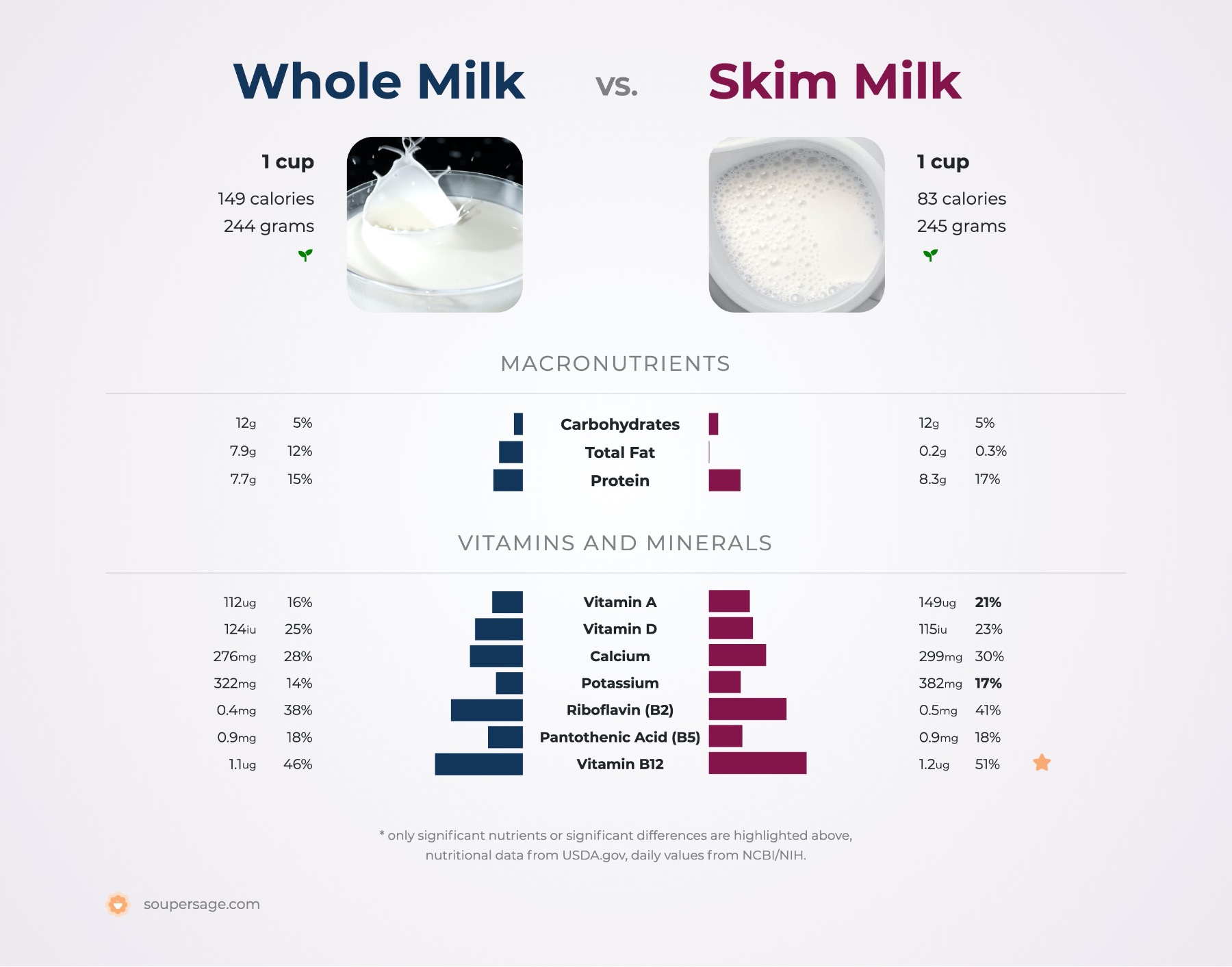
#SKIM MILK VS WHOLE MILK FULL#
Studies say the saturated fat in whole milk might help you feel more satisfied and full longer than drinking reduced-fat or skim milk.Others take issue with possible health implications of the fortification process.The large amount of added sugar in skim and reduced-fat milk is a problem for some.While skim and reduced-fat milk might seem appealing to those who are trying to lose weight, there is a lot of debate as to whether they are more beneficial than whole milk for weight loss. But reduced-fat milk and skim milk often contain more added sugar than whole milk, which is also a no-no.

They also have less saturated fat, which has been shown in studies to raise your "bad" cholesterol and put you at a higher risk for heart disease. Reduced-fat milk and skim milk have fewer calories and higher amounts of vitamins than whole milk (thanks to fortification). After fortification, skim milk contains 10 percent of your daily value of vitamin A and 25 percent of your daily value of vitamin D.After fortification, reduced-fat milk contains 9 percent of your daily value of vitamin A and 29 percent of your daily value of vitamin D.Whole milk contains 5 percent of your daily value of vitamin A and 24 percent of your daily value of vitamin D.Here is a breakdown of the amount of vitamin A and vitamin D found in a single serving (one cup) of each type of milk. Skim milk contains 8 grams of protein, 10 percent of your daily value of potassium, and 29 percent of your daily value of calcium.


The milk retains its fat (about 3.5 percent) and is slightly thick. Whole milk is cow’s milk that hasn’t had its fat content stripped.

When milk is processed, different levels of fat can be taken out (or skimmed). Nearly every store carries whole, reduced-fat and skim milk, but some might not know what those terms really mean. But what type of cow's milk is best for you? It depends on what you want and need in your diet. The USDA recommends about three cups of milk a day for adults and children age 9 and older to help meet daily dietary needs for nutrients such as bone-strengthening calcium and vitamin D. So, what’s the skinny on milk? What are the Basics of Cow Milk? The many options can seem overwhelming when all you want is something to pour over your morning cereal or put in your coffee. We've come far from the days of simply choosing plain or chocolate. Whole, non-fat, reduced, skimmed, almond, soy, rice - the grocery store milk aisle keeps expanding.


 0 kommentar(er)
0 kommentar(er)
